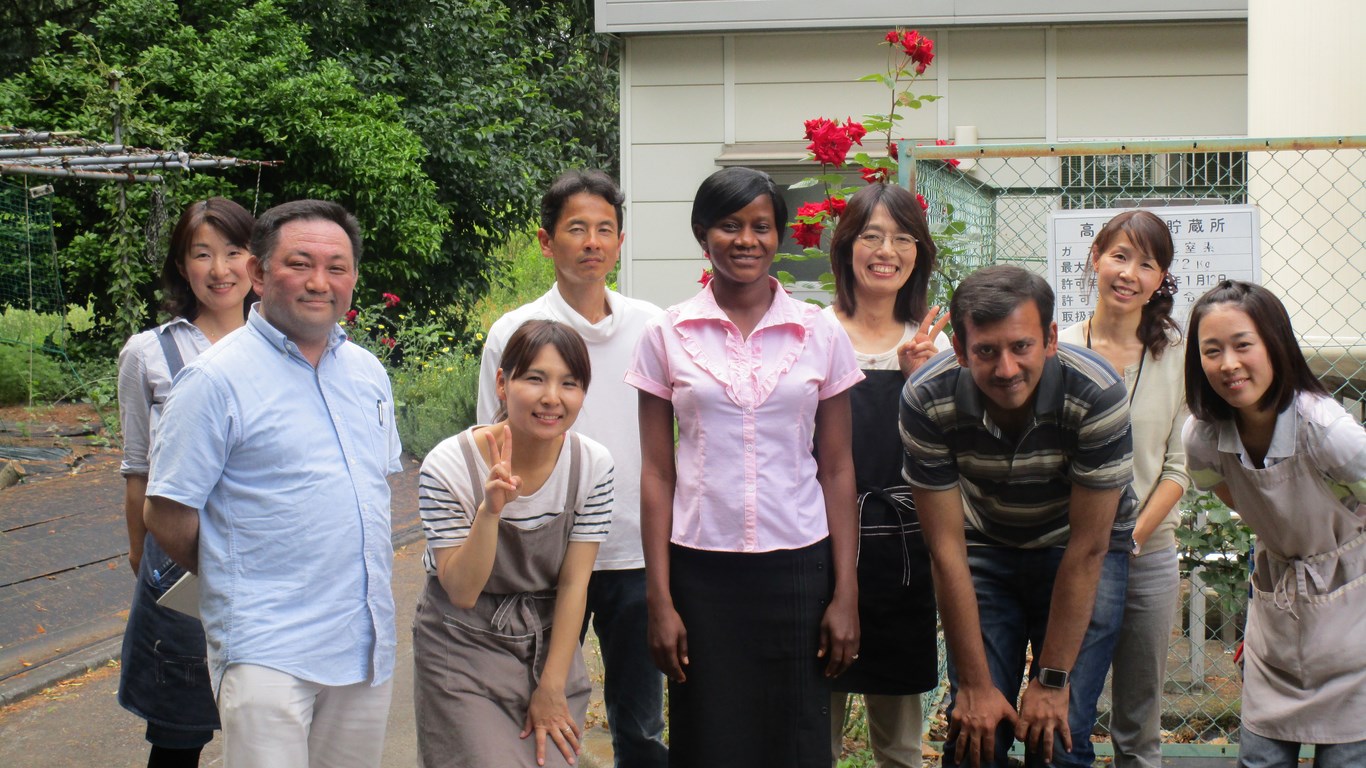IITA’s Genetic Resources Center (GRC) sponsored a 3-week training course at the National Institute of Agrobiological Sciences (NIAS), Tsukuba, Japan, for Olubimpe Abiola Akinyemi, a research supervisor/ cryoBank officer. She was trained on the management of the cryogenic conservation of vegetatively propagated crops and learned about updates on the latest cryopreservation methods using cryo plate techniques (V- and D -Cryo plate procedures).
Cryopreservation refers to a process where plant cells, whole tissues, or organs are preserved by cooling to an ultra-low temperature (in liquid nitrogen at -196o C). It is a method used for the long-term storage of the international collections of clonally propagated crops (yam, cassava, banana, and plantain) held at IITA. This conservation system is complementary to those existing at IITA for clonal crops, i.e., field and in vitro (medium-term storage) banks.
In addition to being the most reliable technique for the long-term storage of plant genetic resources, cryopreservation avoids the disadvantages of tissue ageing and possible somaclonal variation caused by in vitro conservation. It is less time and labor consuming and may potentially eliminate fungal and bacterial contamination. Cryopreservation techniques have been increasingly used for the long-term storage (LTS) of plant biodiversity.
Dr Badara Gueye, IITA’s In vitro Propagation and Conservation Specialist, says this conservation system is carried out in such a way that the plant materials are stored for a very long period (up to many decades) without losing their ability to regenerate a whole plant. The different steps of the protocol prepare the cells against the harmful effects of the cooling process (the formation of ice during freezing). The new cryo-plate protocol developed by the NIAS genebank is fascinating and has been praised by cryopreservation communities around the world as it allows the net improvement of cryogenic conservation. “As we are about to start cryobanking IITA’s clonal crop collection, the new system that Olubimpe has learnt will nudge us in the right direction,” he said.
Dr Shin-Ichi Yamamoto was Olubimpe’s host in Japan. He is Gene Bank Principal Researcher in NIAS—one of the reference laboratories in plant cryopreservation and the home of vitrification methods, the world’s most used cryopreservation technique.
Olubimpe said she was excited about the training. “The decision to send me to this training has demonstrated in more ways than one that it is important to plan a journey before embarking on it. With the novel Japanese cryopreservation techniques that I have learnt, we have commenced some experimental work. This will guide us on how best to improve IITA’s cryopreservation methods and techniques.”
Olubimpe’s study with the NIAS has also paved the way for future collaboration with the Japanese genebank on cryopreservation. “Dr Yamamoto is showing great interest in visiting IITA for further partnership. We are working together to elaborate research programs that we hope will result in a good future and fruitful collaboration,” said Dr Gueye. This new asset in the conservation strategy of important international collections will confirm the leading role played by IITA’s GRC in safeguarding the diversity of staple crops for food security, particularly in sub-Saharan Africa.



No Comments